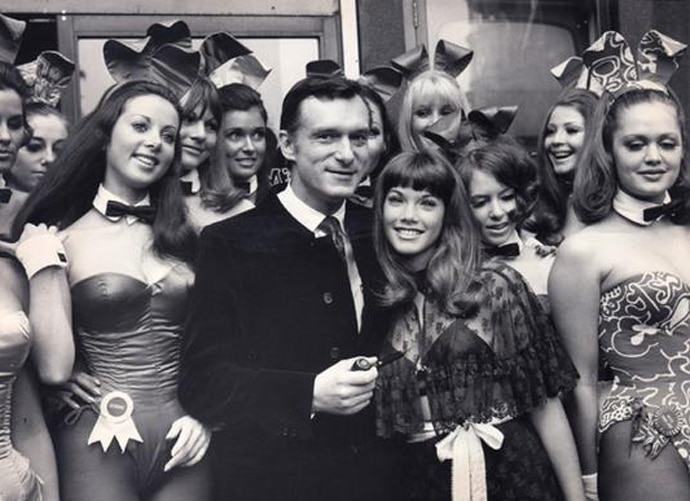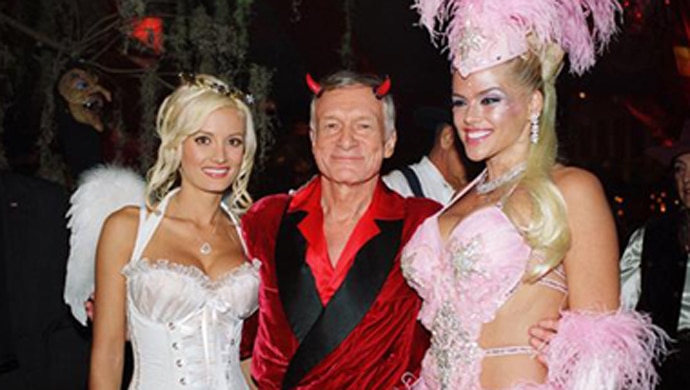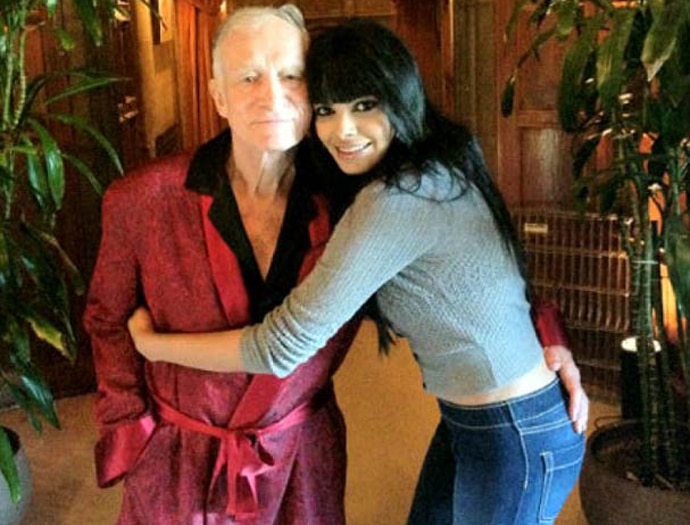Everyone has a Playboy memory, death of Hugh Hefner can't take that away

What is it about rabbits that they populate every sector of the Western popular culture? The children’s literature has Enid Blyton’s "Brer Rabbit", Lewis Carroll’s "The White Rabbit" and "The March Hare", AA Milne’s "Winnie the Pooh", Aesop’s Fables’ "The Hare (and The Tortoise"), Beatrix Potter’s "Peter the Rabbit", and many more.
Rock music is replete with references to it – either directly or as a metaphor – Jefferson Airplane’s "White Rabbit", Captain Beefheart and His Magic Band’s "A Carrot is as Close as a Rabbit Gets to a Diamond", Elton John’s "Jack Rabbit", Steeleye Span’s "The Bonny Black Hare", and so on. Similarly, comics and children’s TV serials are full of them.
It’s therefore not really a surprise that the adult magazine Playboy would have the bunny as its logo. But unlike bunnies mentioned above, this one supersedes all others (except maybe Bugs Bunny) in terms of universal recognisability. It has an iconic status and is a symbol of prestige, sexiness and mystique. And all this, mind you, when the magazine is banned in many countries, including our own.

Hugh Hefner, its larger-than-life founder, had a very interesting explanation: “The rabbit, the bunny, in America has a sexual meaning; and I chose it because it’s a fresh animal, shy, vivacious, jumping – sexy. First it smells you then it escapes, then it comes back, and you feel like caressing it, playing with it. A girl resembles a bunny. Joyful, joking. Consider the girl we made popular: The Playmate of the Month. She is never sophisticated, a girl you cannot really have. She is a young, healthy, simple girl – the girl next door….”
A straight-forward, "screw-you, no-pulling-of-punches" reasoning. But that’s who the man was who died at a ripe old age of 91 yesterday. If a poll is carried out of men between the age group of 18-90 as to which man they admire the most, Hefner would most likely make it to the top five.

Playboy was launched in 1953. It was a status-quo shattering event, providing a counterpoint to the repressive climate of the era. World War II had ended a few years earlier. Hefner tapped into the new consumer attitude taking roots in the country.
Of course, it wasn’t the first nude magazine, but it was different. It positioned itself successfully as an upscale men's magazine, combining images of nude women with in-depth articles, literature and interviews.
The magazine published stories by Jack Kerouac, Ray Bradbury, Ian Fleming, Joseph Heller, Haruki Murakami and Margaret Atwood among others, and interviewed culturally and politically significant figures such as Miles Davis (the magazine’s first interview), Fidel Castro, Marlon Brando, Frank Sinatra, Malcolm X and Jimmy Carter (who confided that he had committed adultery). John Lennon spoke to Playboy in 1980 before he was shot dead.
But nudity was always a big selling point of the magazine. Marilyn Monroe famously appeared on the magazine's first cover and centrefold. Madonna, Sharon Stone and Naomi Campbell were photographed at the peak of their fame. Kate Moss posed for it. Lindsay Lohan and Pamela Anderson have also graced it – a veritable conquest of celebrities.
Hefner was upfront about the magazine’s purpose from the very first issue and didn't hide the magazine's intentions.
“If you're a man between the ages of 18 and 80, Playboy is meant for you," he wrote in the first issue.
"We want to make it clear from the very start, we aren't a 'family magazine'. If you're somebody's sister, wife or mother-in-law and picked us up by mistake, please pass us along to the man in your life and get back to your Ladies Home Companion."

The magazine became a cultural phenomenon, a rite of passage for generations of men - an illicit thrill in adolescent bedrooms, classrooms and other hangouts - and helped spark a universal sexual revolution.
In India, during our school and college days of the 1960s and 1970s, we had no choice but to make do with the sleazy indigenous fare.
Playboy was a rarity and an aspirational must-have. Only a lucky few whose broad-minded uncles had gone abroad, and who had managed to give customs the slip, had these magazines. These boys obviously became hugely popular. The models had to be ogled at in the presence of the magazine owner who would be loath to let that out of his sight. He knew that would entail parting with the centrefold.
Hefner, who was born in Chicago in 1926 to Methodist parents, served in the US Army in World War II, graduated from the University of Illinois and worked as a copywriter for Esquire. The first issue of Playboy, produced from his kitchen and financed with $8,000 from investors, sold more than 50,000 copies. Circulation reached 200,000 within its first year. The magazine rose in popularity throughout the 1960s, and was at its peak in 1970s (more than seven million).

Although Hefner’s move in the conservative 1950s was fraught with risk, he was not arrested until 10 years later, in 1963, on obscenity charges after publishing nude photos of Jayne Mansfield. The charges were, however, dropped after the jury failed to reach a verdict.
While the magazine became very popular, it also provoked criticism from feminists and conservatives. They objected that women were being objectified.
Some described Hefner as a lecherous pornographer. However, many consider Hefner to be a media and cultural pioneer, a leading voice behind some of the most significant social and cultural movements of our time with respect to free speech, civil rights and sexual freedom.
Asked what he was most proud of in 1992, Hefner told The New York Times, “That I changed attitudes toward sex. That nice people can live together now. That I decontaminated the notion of premarital sex. That gives me great satisfaction.”
The success of Playboy gave way to the rise of the Playboy lifestyle, allowing Hefner to build a Playboy mansion, create Playboy clubs with cocktail waitresses decked out in revealing costumes with bunny ears and fluffy white bunny tails (at their peak, there were 40 around the world), resorts, Playboy merchandise, event sponsorships, and TV shows.
The Bunny became a symbol of male sophistication and hedonism.
US feminist and journalist Gloria Steinem worked undercover at the New York Playboy Club to write "A Bunny's Tale", which showed conditions waitresses faced in 1963. But none of the criticism could stop the Playboy juggernaut.
Hefner hosted the talk show, Playboy’s Penthouse, and the TV series, Playboy After Dark, in 1969 and 1970. The latter was known for its inclusive approach at a time when many talk shows still featured mostly white male guests - the show had Tina Turner, Sammy Davis Jr, The Grateful Dead, Deep Purple, Three Dog Night, Steppenwolf, Harry Nilsson, Grand Funk Railroad, James Brown, Iron Butterfly, Linda Ronstadt, and Joe Cocker.
After suffering through a recession and competition from magazines such as Penthouse, Playboy sold its resort interests and gradually phased out the Playboy club business (Hefner declared them “too tame for the times”).
As the cause of sexual freedom began to be taken over by hippies and the counterculture, Hefner moved to Los Angeles in 1975 to become more involved in TV and film production. He presided over the Hollywood social scene from his bubbling jacuzzi at the Playboy mansion, a frequent location for industry events.

The mansion, was sold in 2016, but the terms of the sale specified that he could live there until his death.
The eternal bon vivant personified the Playboy image. He was married thrice, had five partners and bedded a countless many. A rotating cast of young women moved into the Playboy mansion, spawning in 2005 the reality show The Girls Next Door.
But times were changing. It was the internet era making pornography more readily available. The magazine’s circulation plummeted to its current 800,000. The company no longer makes most of its money from its racy photos. Instead, it's made from licensing its logo on merchandise.
Playboy's website has already banished nudity, and web traffic has quadrupled.
In 2015, Playboy announced it would no longer publish pictures of fully nude women because such images were passé in the internet age, but they returned in 2017. “Today we are taking our identity back and reclaiming who we are,” Hefner had then said.
In the spirit of India’s ever-increasing role in globalisation, Sherlyn Chopra became the first-ever Indian model to pose for Playboy in 2014. She described her experience as one of the most liberating ones that she ever had so far.
Playboy Clubs have now opened in India. There are plans for opening many more. Of course, in keeping with India's obscenity laws that ban material deemed lascivious or appealing to prurient interests, the whole experience is toned down.
Public figures from all walks of life have flooded social media with condolences and tributes.
Said Kim Kardashian West on Hefner’s death: “I am honoured to have been a part of the Playboy team. You will be greatly missed."
Reverend Jesse Jackson Sr sent his condolences: "Hugh Hefner was a strong supporter of the civil rights movement. We shall never forget him."
Nancy Sinatra: "One of the nicest men I've ever known. Godspeed, Hugh Hefner."
Everyone has a Playboy memory and that’s something that no death can take away.
RIP Hefner. We are better off that you lived and gave us the bunny.

